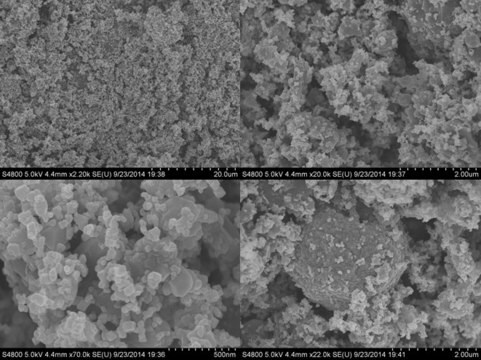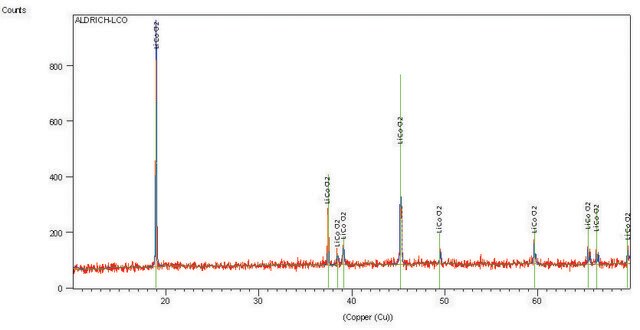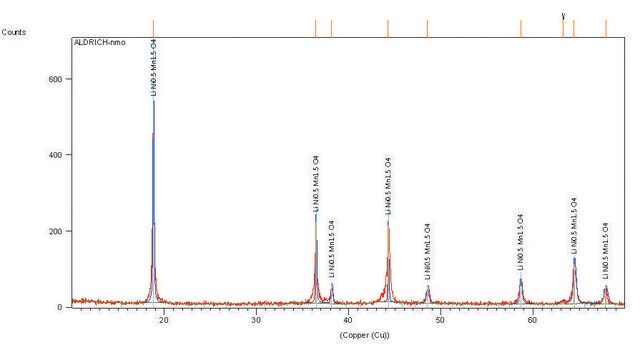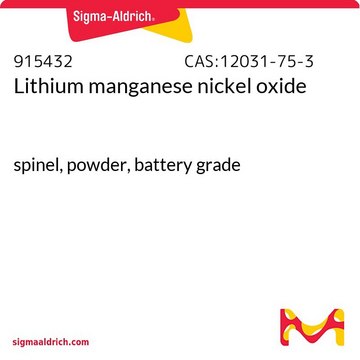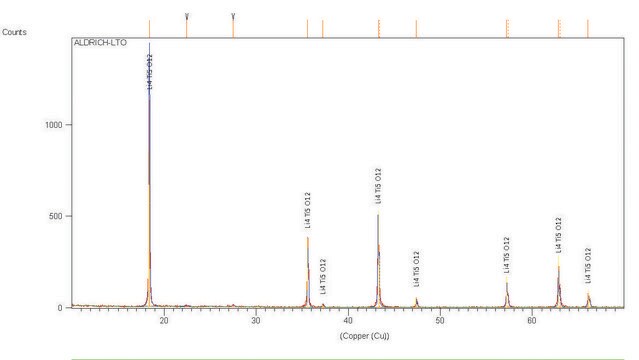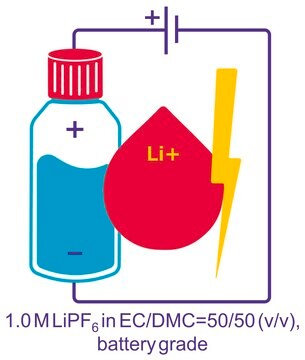761001
Lithium nickel manganese cobalt oxide
powder, <0.5 μm particle size, >98%
Sinónimos:
NMC
About This Item
Productos recomendados
grade
battery grade
assay
>98%
form
powder
mol wt
Mw 96.46 g/mol
composition
LiNi0.33Mn0.33Co0.33O2
greener alternative product characteristics
Design for Energy Efficiency
Learn more about the Principles of Green Chemistry.
sustainability
Greener Alternative Product
particle size
<0.5 μm
mp
>290 °C (lit.)
density
2.11 g/cm3
application(s)
battery manufacturing
greener alternative category
, Enabling
General description
Application
Features and Benefits
- More Reliable
- Longer Cycle Life
- Bulk and Pilot Scale Available
Legal Information
Related product
signalword
Warning
hcodes
Hazard Classifications
Carc. 2 - Skin Sens. 1
Storage Class
13 - Non Combustible Solids
wgk_germany
WGK 3
flash_point_f
Not applicable
flash_point_c
Not applicable
Elija entre una de las versiones más recientes:
¿Ya tiene este producto?
Encuentre la documentación para los productos que ha comprado recientemente en la Biblioteca de documentos.
Los clientes también vieron
Artículos
Professor Qiao’s laboratory lays out recent advances in conversion type lithium metal fluoride batteries. This review explores key concepts in developing electrochemically stable microstructures for wide Li-ion insertion channels.
Li-ion batteries are currently the focus of numerous research efforts with applications designed to reduce carbon-based emissions and improve energy storage capabilities.
Discover more about advancements being made to improve energy density of lithium ion battery materials.
Lithium-ion batteries (LIBs) have been widely adopted as the most promising portable energy source in electronic devices because of their high working voltage, high energy density, and good cyclic performance.
Nuestro equipo de científicos tiene experiencia en todas las áreas de investigación: Ciencias de la vida, Ciencia de los materiales, Síntesis química, Cromatografía, Analítica y muchas otras.
Póngase en contacto con el Servicio técnico